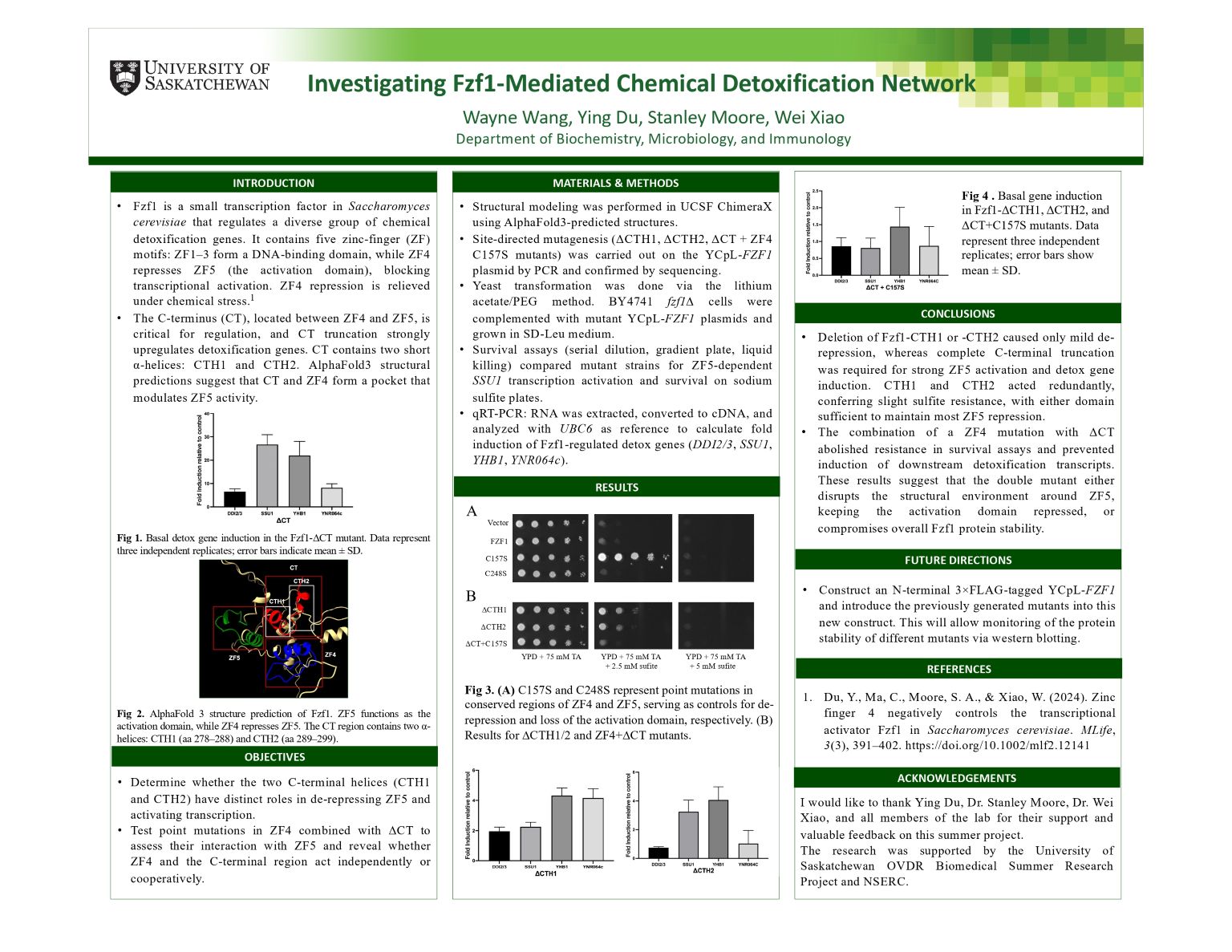
Investigating Fzf1-Mediated Chemical Detoxification Network
Wayne Wang
Fzf1 is a small zinc-finger transcription factor in Saccharomyces cerevisiae that regulates a broad range of chemical detoxification genes. It contains five zinc-finger (ZF) motifs: ZF1–3 form the DNA-binding domain, while ZF4 represses the activation domain ZF5, preventing transcription under basal conditions. This repression is relieved under chemical stress. Previous studies have shown that truncation of the C-terminal region (CT) strongly upregulates detoxification genes. AlphaFold3 predictions suggest that ZF4 and the CT—comprising two C-terminal helices (CTH), CTH1 and CTH2—form a pocket that modulates ZF5 activity. To assess the regulatory contributions of these domains, we generated deletion mutants and analyzed their effects on sulfite resistance and detoxification gene expression. While complete CT deletion strongly upregulated DDI2/3, SSU1, YHB1, and YNR064c, truncation of either CTH1 or CTH2 caused only mild de-repression, indicating that CTH1 and CTH2 act redundantly to maintain most ZF5 repression. Moreover, combining the ΔCT mutation with a ZF4 mutation abolished both detox gene induction and sulfite resistance, suggesting that the double mutant either disrupts the structural environment surrounding ZF5—keeping the activation domain repressed—or compromises overall Fzf1 protein stability.
